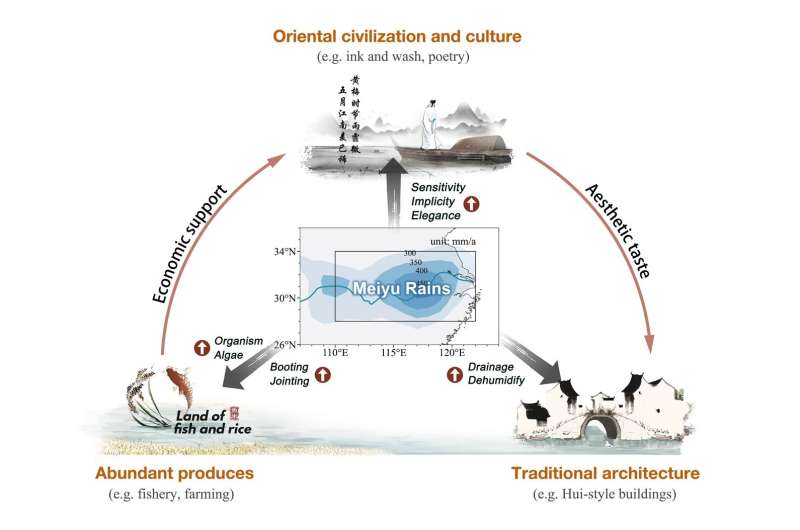During early summer, a unique and far-reaching meteorological phenomenon occurs in China's Yangtze River Basin and the main islands of Japan, known as Meiyu in China and Baiu in Japan. Traditional Meiyu-Baiu with significantly misty features has a long course in Asian history and has shaped civilization over thousands of years. Although the traditional Meiyu-Baiu is closely linked to moldy damage, its continuous and gentle rain moistens the paddy rice at the jointing and booting stage.
Meanwhile, the warm and moist conditions also promote the growth of organisms and algae in lakes and rivers, which provide an abundance of food to fisheries. Hence, the Meiyu region is often called "the land of fish and rice." The beauty of the traditional Meiyu also became a frequently used literary image.

Numerous oriental poems, ink-and-wash paintings, and have consistently expressed feelings about "misty rains," which can date back to at least the Jin Dynasty (265–420 AD). However, in recent decades, both the Meiyu and Baiu have seldom exhibited their traditional misty features. But owing to the lack of quantitative metrics applicable to misty rains, there is still no consensus on whether the traditional Meiyu-Baiu has been declining significantly.
Although there have been studies on the detection and attribution of extreme Meiyu events (rainstorms or ), traditional Meiyu is not an extreme event, and the existing conclusion cannot be directly transferred to its changes. There is no robust.
















